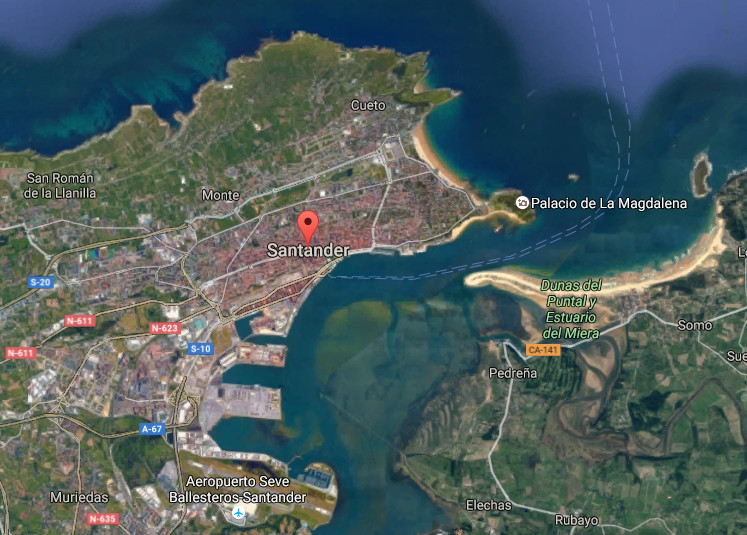Parque Atlántico de las Llamas
![]() El Parque Atlántico de las llamas, situado en la ciudad de Santander, es una amplia zona verde recuperada cuya extensión alcanza las 11 hectáreas. Emplazado en las proximidades de la costa Este de la ciudad, junto a las playas del Sardinero, se prolonga hasta el barrio de La Albericia.
El Parque Atlántico de las llamas, situado en la ciudad de Santander, es una amplia zona verde recuperada cuya extensión alcanza las 11 hectáreas. Emplazado en las proximidades de la costa Este de la ciudad, junto a las playas del Sardinero, se prolonga hasta el barrio de La Albericia.
El parque, ubicado en la vaguada de las Llamas, se encuentra entre la Avenida de los Castros y el barrio de Valdenoja. Su estado natural originario recibía una de las dos rías de la ciudad y estaba flanqueado por dunas y laderas. La reconstrucción ha recuperado parte de aquel paisaje, disponiendo un terreno pantanoso que vertebra el área, acompañado de carril bici, zonas de ocio y descanso.
La vegetación autóctona presente cuenta con abedules, robledales, alisos, hayas, abedules y tejos entre otras especies. Aves insectívoras y limícolas, como el martín pescador o la garza real son algunos ejemplos de animales propios de este bosque atlántico. La presencia permanente de agua posibilita la existencia de anfibios como sapos o tritones. Estos nombre ejemplares son una parte de la peculiar orquesta que se ha conseguido reproducir, a imitación de antaño.
Atlantic Park of Las Llamas
![]() The Atlantic Park of Las Llamas, placed in the city of Santander, is a wide recovered green space which extension reaches 11 hectares. Located in the proximities of the East coast of the city, close to the beaches of the Sardinero, it extends up to the neighborhood of La Albericia.
The Atlantic Park of Las Llamas, placed in the city of Santander, is a wide recovered green space which extension reaches 11 hectares. Located in the proximities of the East coast of the city, close to the beaches of the Sardinero, it extends up to the neighborhood of La Albericia.
The park located in the valley of Las Llamas, is between the Avenue of the Castros and neighborhood of Valdenoja. Its natural original condition was receiving one of the two estuaries of the city and it was flanked by dunes and hillsides. The reconstruction has recovered part of that landscape, arranging a swampy area that is the esential structure of the area, accompanied of bikeway, zones of leisure and rest.
The autochthonous vegetation there possesses birches, oakwoods, alder-trees, beeches, birches and yews between other species. Insectivorous birds and waders, as the martín fisherman or the royal heron are some examples of the animals of this Atlantic forest. The permanent presence of water makes the existence of amphibians possible as toads or newts. These examples of names are a part of the peculiar orchestra that has managed to reproduce, to imitation of long ago.
![]()


